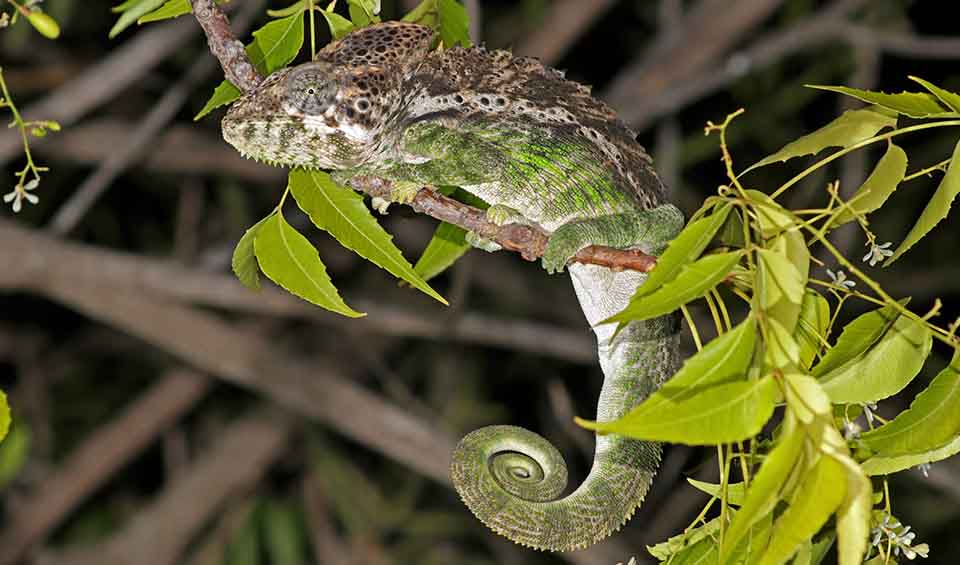One of Madagascar’s largest and most rugged-looking chameleon species, known for its spiny appearance and impressive ability to blend into its surroundings. Native to the island’s dry and semi-dry regions, particularly in the southwest, this chameleon is perfectly adapted to a life among shrubs, small trees, and dry forest landscapes. Its name comes from the row of raised scales, or “warts,” that run along its sides and back, giving it a rough, textured look that helps it blend into bark and brush.
This chameleon’s color varies from olive green to brown or gray, with some individuals showing spots or stripes depending on mood, temperature, and surroundings. Like all chameleons, the warty chameleon can change color, though not as dramatically as some other species. This ability helps it regulate body temperature, communicate with other chameleons, and camouflage in its environment.
The warty chameleon is solitary and territorial, especially the males, who may display aggressive behavior—like puffing up their bodies, opening their mouths wide, or changing color—when confronting rivals. These displays are usually enough to avoid physical fights, as both individuals try to avoid injury. The species is diurnal, active during the day, and spends most of its time slowly navigating through bushes and branches, hunting insects and other small prey using its long, sticky tongue, which it can shoot out with lightning speed to catch food.
Like other chameleons, it has independently moving eyes, giving it a near 360-degree view of its surroundings, and zygodactylous feet—with toes grouped in opposing bundles for a strong grip on branches. It also has a prehensile tail, which acts like a fifth limb, providing stability and support when climbing.
Distribution
 Madagascar
MadagascarAnything we've missed?
Help us improve this page by suggesting edits. Glory never dies!
Suggest an editGet to know me
Terrestrial / Aquatic
Altricial / Precocial
Polygamous / Monogamous
Dimorphic (size) / Monomorphic
Active: Diurnal / Nocturnal
Social behavior: Solitary / Pack / Herd
Diet: Carnivore / Herbivore / Omnivore / Piscivorous / Insectivore
Migratory: Yes / No
Domesticated: Yes / No
Dangerous: Yes / No




